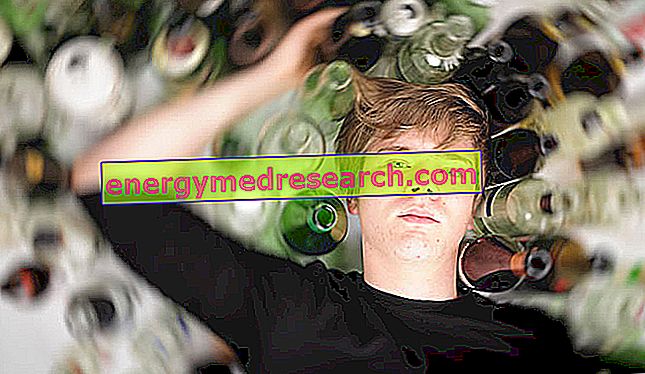Ethyl coma is one of the most serious consequences of acute ethanol intoxication.

Symptoms
As reported in the following table, the symptoms associated with alcohol intoxication are related to the levels of ethyl alcohol in the blood, also in relation to the individual toxic habit.
| Alcohol (g / l) * | Effects (indicative) ** |
0.2 | Sociability, expansiveness, redness in the face |
0.5 | Decreased inhibitory brakes |
0.8-1.2 | Depressive action on motor centers, loss of self-control and balance disorders |
1, 2-2, 0 | Real drunkenness, staggering gait |
2.0-4.0 | Loss of muscle tone, indifference to the surrounding environment, absence of reaction to stimuli, immobility, mutacism |
> 4.0 | Unconsciousness and coma, respiratory and cardiovascular depression, death |
(*) Alcoholemia indicates the levels of alcohol in the blood and depends primarily on the quality and quantity of the alcohol taken on
(**) Indicatives, since, for the same blood alcohol level, the effects of alcohol depend on individual tolerance to the substance; in alcoholics, for example, the severity of intoxication is lower, while adolescents and women can go into an ethyl coma already exceeding 2.5 grams per liter; in children alcohol levels above 2 grams / liter can be fatal.
Please also note that:
- alcohol is absorbed mainly at the level of the small intestine, the stomach and to a lesser extent into the large intestine;
- the peak of blood concentration is reached 30-120 minutes after ingestion (faster if on an empty stomach, if the intake is concentrated over time and if the alcoholic drink is carbonated rather than smooth).
- The simultaneous intake of other drugs such as psychotropic drugs or drugs accentuates the disorders.
It is possible to calculate the indicative alcohol level - based on the height, sex, amount of alcohol ingested and the time elapsed since drinking - with this simple form: calculation of the alcohol rate.
Ethyl coma is accompanied by:
- profound state of unconsciousness with classic halitosis, due to the massive elimination of alcohol at the alveolar level, and skin redness;
- vasodilation and hypothermia, possible cause of death;
- bradycardia and arterial hypotension;
- respiratory depression.
Treatment
This is a real health emergency, which as such requires rapid assistance and transport to the hospital for medical intervention. Since there is no "antidote", the therapy of ethyl coma is based on the correction of hypothermia, hypoglycemia and acidosis (decrease in blood pH):
- intravenous glucose, possibly associated with small amounts of insulin, to correct hypoglycemia;
- Fructose 1, 6 diphosphate, thiamine, metadoxine and pyroglutamic acid, to accelerate the metabolism of alcohol;
- Sodium bicarbonate or lactate, for the correction of metabolic acidosis;
- Saline solutions to restore hydro-saline balance;
- Glutathione, to facilitate liver detoxification;
- Naloxone at high doses, due to its non-specific awakening action (clinical results not entirely unique);
- Physical means to counter hypothermia;
- Possible forced maintenance of breathing by artificial means.
For less severe cases see the in-depth article: Hangover Remedies



